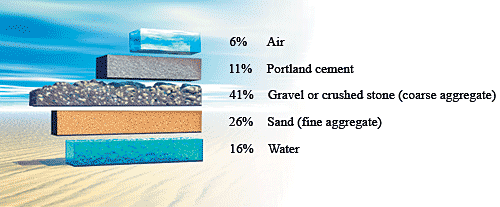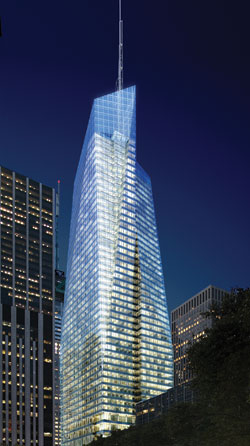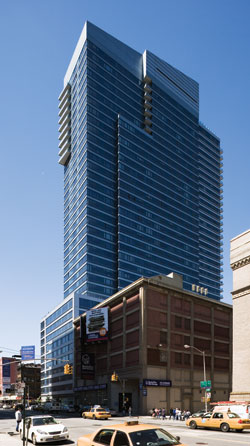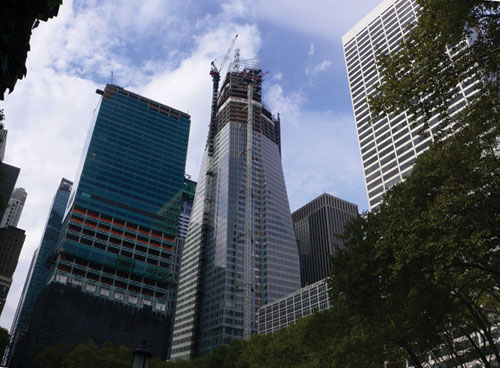Building Even Better Concrete
|
The embedded energy in concrete can also be reduced by replacing some of the cement with so-called supplementary cementitious materials (SCMs). These materials-slag cement, fly ash, and silica fume-are waste products of other industrial processes. Slag is a by-product of steelmaking, while fly ash is created when coal is burned at power plants and other industrial facilities. Silica fume is a by-product of silicon and ferrosilicon metal production. The use of these materials reduces the amount of virgin material in concrete and also conserves landfill space. The strategy of replacing cement with SCMs is "dilution as a solution to pollution," says O'Hare.
Replacement of cement with SCMs can also impart physical benefits to concrete. For example, the addition of slag can create, generally speaking, concrete that is more dense and less permeable to water, and therefore more durable. One possible drawback is that mixes with high percentages of slag can take longer to gain strength. However, even though it is slower to set, slag cement can ultimately achieve higher compressive strengths than conventional concrete.
Although slag cement's longer set time could in theory mean slower construction, many designers and contractors say that they have not experienced delays related to use of high percentages of the supplementary material. Andrew Mueller-Lust, a principal at New York City−based structural engineer Severud Associates, says that even in sub-zero temperatures, contractors maintained a two-day pour cycle on the Helena, an apartment building on the West Side of Manhattan. The concrete mix for the 600-unit Helena, designed by FXFowle and completed in late 2005, contained 45 percent slag. Severud has so far used the mix on three New York City projects, including One Bryant Park, the recently topped out office tower designed by Cook+Fox. "We have not seen delays materialize," says Mueller-Lust.
|
||||||
Construction industry insiders say that concrete containing at least small quantities of SCMs is now more usual than that without. Use of slag and fly ash "is now as common as unleaded gas," says Mel Ruffini, senior vice president of Tishman Construction in New York City.
A few researchers are hoping to use these normally supplementary ingredients to completely replace cement. Civil engineers at Montana State University are working on using locally available high-calcium fly ash as the sole binder in structural-grade concrete. Since the summer of 2002, they have successfully completed a handful of field trials on small structures, including a residential foundation, using conventional mixing, transporting, and placement equipment.
The team members' first challenge was the mix's short set time, but they have since learned to control it by adding borax as a retarder. "By adjusting the admixture, we can dial in the set time, from 1 to 5 hours," says Jerry Stephens, a professor at the university's Western Transportation Institute. A huge unknown that remains, however, is durability, and they plan accelerated testing for such factors as freeze-thaw performance. "The material doesn't have the history of portland cement," concedes Stephens.













